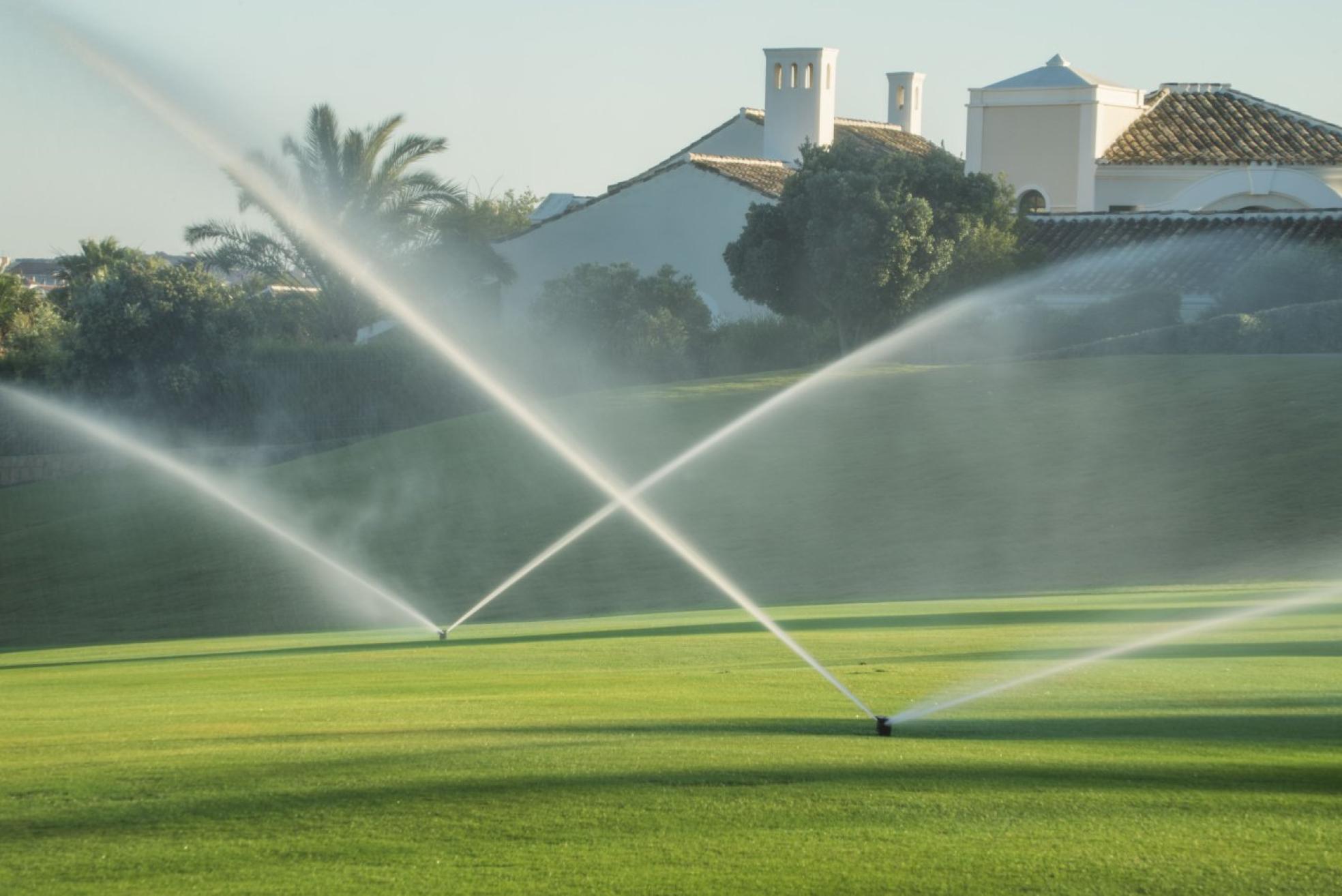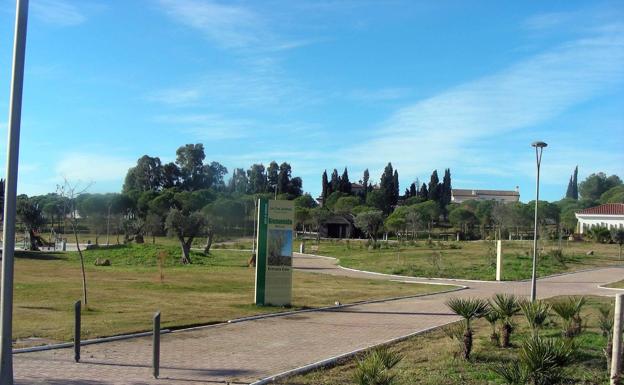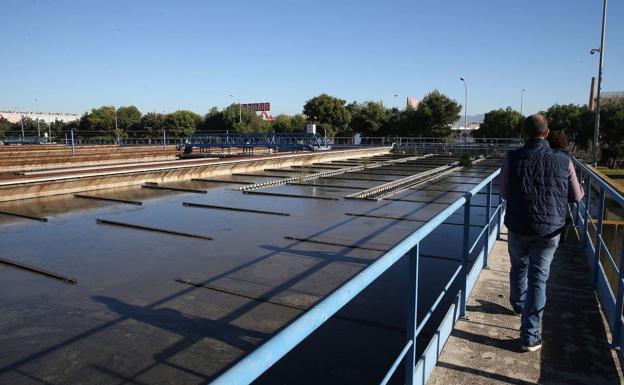

Sections
Highlight

FRANCISCO JIMÉNEZ
Friday, 17 December 2021, 18:48
Malaga province is facing the worst drought since 2008, with wells drying up, reservoirs at one-third of capacity (La Viñuela, which supplies La Axarquía, is only 17 per cent full) and farmers gazing desperately at the sky for a sign their crops will be saved.
Despite this, the province including the entire Costa del Sol is allowing itself the luxury of using only one in every ten litres of the waste water that the treatment plants could recycle and pump out again.
The system, when used properly, consists of filtering sewage an extra, third time so it can be reused for irrigating farmland, parks and gardens (but not for domestic, human consumption) and so reduce reliance on the area's reservoirs for supplies.
Even though the sewage plants can produce 76 cubic hectometres a year, 66 are released into the sea because there is no pipe network for it to be used for other purposes such as irrigation and street cleaning. The amount wasted is one quarter of the 241 Hm3 which the agriculture sector needs every year.
This volume is more than La Concepción reservoir in Marbella can hold (61.5) and, in terms of domestic use, this water which could be used for irrigation plus cleaning is equivalent to the annual consumption of 1.3 million people (each person uses an average of 133 litres a day). That is precisely the population of Malaga city, the Costa del Sol and La Axarquía combined. Malaga is the Andalusian province which uses most recycled water.
"Reusing waste water has enormous potential because it can be used to irrigate more green zones and agriculture, but it can also be used to artificially replenish the underground water sources as long as studies show that there is no impact on the environment," says Bartolomé Andreo, a professor of Geology and director of the Hydrogeology Centre at Malaga University. He adds, " it is necessary to keep experimenting and put an end to misgivings that still exist about the use of recycled water."
Costa del Sol

This mistrust started to be overcome nearly three decades ago on the Costa del Sol, when the Monte Mayor golf course in Benahavís became the first to use recycled water from the Guadalmansa sewage plant in Estepona, back in 1989.
Nowadays, after a network of pipes was built, 42 golf courses and other large green areas such as Selwo in Estepona, the race course in Mijas, Los Tres Jardines park in Marbella and La Zagaleta in Benahavís all use recycled water for irrigation. Altogether, Acosol pubic water company (which covers the western Costa) sends them between six and seven cubic hectometres a year.
That is a significant amount, but there is a wide margin for growth given that the six sewage plants in that area (Marbella, Estepona, Manilva, Mijas, La Cala de Mijas and Benalmádena) have the capacity to produce nearly 63 Hm3 a year. Sources at Acosol say there will be a major leap forward when recycled water is used to clean streets as well as on golf courses and large green areas.
"We have to improve the quality of our waters and obtain the relevant authorisations from the Junta de Andalucía, because until we are able to use recycled water for cleaning the streets it will just go on being wasted," admits the CEO of Acosol, Manuel Cardeña. With regard to cost, the tariff is 0.36 euros per cubic metre (1,000 litres), which "doesn't cover the costs of the service". In fact, the investment will only really be recovered when there are more clients.
Malaga city and Guadalhorce

In Malaga city, the Guadalhorce sewage plant can produce a maximum of 10,000 cubic metres a day (3.6 6 Hm3 a year), although the most it has been able to do is regenerate about 7,000 from the refrigeration system of the power station next to the Technology Park. This is because the demand has fallen to such an extent that so far this year the extra filter system has barely been activated. Malaga council is currently seeking EU finance to build a 12 km network of pipes which would enable the water to be reused for irrigation in places where consumption is high such as the Parador de Golf, the airport and the new urbanisations which are planned in Churriana.
The proposal from the municipal water company (Emasa) would cost 8.1m euros and also includes increasing the third filter capacity by about 14,000 m3 a day. In this case the pipes would be built later.
This will also be the case with the future, new metropolitan sewage plant (planned on a site north of the airport) because when this plant, which will stop sewage being released into the Guadalhorce river, comes into operation, probably in mid-2025, all the sewage which could be triple-filtered will be unused because there will be no pipe network to put the water back into circulation again.
And this is where the farmers come in. "If there is no water, we have to use water from sewage plants, but the quality has to be guaranteed and local authorities have to do their bit because creating an infrastructure from the sewage plant to everywhere we need it is very expensive," says the general secretary of the Provincial Association of Irrigators of Malaga (Aprema), Juan Antonio Aguilar, who also makes a point on price. Now, the supply from the Guadalhorce reservoirs costs about 0.08 euros per cubic metre, but the cost of recycled water under the Emasa project would be 0.15 if there were EU financing, or more than 0.30 otherwise.
"In the greenhouses and the areas of La Axarquía with subtropical crops, they have the potential to pay that, but people who grow lettuces, broad beans and citrus fruits, which predominate in the Guadalhorce valley area, wouldn't be able to afford it," he warns.
Axarquía

In La Axarquía, which is where the lack of rain is more pronounced, they finally seem prepared to make more use of recycled water. If we include the Nerja sewage plant, which is still not fully operational and where the triple-filtering facility is not activated, the area is able to regenerate 8.4 Hm3 a year.
However, right now only the 2,000 Hm3 from the Rincón de la Victoria plant (half its capacity) is being used regularly for Añoreta golf course. In addition, since a few weeks ago they have been able to use part of the 9,000 m3/day produced by the Vélez plant, once the Junta approved the concession (applied for in March) to the communities of irrigators south of the Guaro, which amount to about 2,600 hectares, mainly of mangos and avocados, allowing them to use 5.2 Hm3 a year.
This potential could double next spring, when the emergency works carried out are expected to be completed so that all the waste that reaches the sewage plants in Rincón, Vélez and the two in Torrox receive this third filtering which guarantees that it can be reused.
This scheme, which is the result of the drought decree which is already in force in La Axarquía, will cost 1.7 million euros and will open the door to the further use of this resource. This will not be immediate, though, because there are no pipelines to transport it in Rincón or in Torrox. In Vélez, the idea is to divert it into pools so the irrigators can distribute it.
"We are making progress, but we have the difficulty that most of the population and therefore the sewage plants are on the coast, while the areas that need irrigation are in the highest inland areas so we have to add the electricity costs to the cost of the pipes, to get the water this far," explains Gregorio Campos, the vice-president of the Axaragua water company in La Axarquía.
"We are very tired of all this. We don't have the water we need, and the water that could be used for recycling is just being thrown into the sea," says the president of the Spanish Association of Tropical Fruit Producers, Javier Braun.
He cannot hide his feelings about this situation.
Noticia Patrocinada
Publicidad
Julio Arrieta, Gonzalo de las Heras (gráficos) e Isabel Toledo (gráficos)
Jon Garay e Isabel Toledo
Daniel de Lucas y Josemi Benítez (Gráficos)
Esta funcionalidad es exclusiva para registrados.
Reporta un error en esta noticia

Debido a un error no hemos podido dar de alta tu suscripción.
Por favor, ponte en contacto con Atención al Cliente.

¡Bienvenido a SURINENGLISH!

Tu suscripción con Google se ha realizado correctamente, pero ya tenías otra suscripción activa en SURINENGLISH.
Déjanos tus datos y nos pondremos en contacto contigo para analizar tu caso

¡Tu suscripción con Google se ha realizado correctamente!
La compra se ha asociado al siguiente email
Comentar es una ventaja exclusiva para registrados
¿Ya eres registrado?
Inicia sesiónNecesitas ser suscriptor para poder votar.